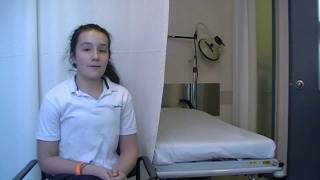Pediatric Spinal Deformity
Children may experience several types of pediatric spinal deformity, including scoliosis, kyphosis and spondylolisthesis. Scoliosis and kyphosis involve an abnormal curvature of the spine. Spondylolisthesis refers to a displaced vertebra. If your child has a spinal deformity, you should get a medical evaluation as soon as possible.
Pediatric Spinal Deformity: What You Need to Know
- Back problems aren’t limited to adults. Children can experience back pain due to a pediatric spinal deformity.
- Common symptoms of a pediatric spinal deformity include lower back pain, walking with a “waddle” or the emergence of a “humpback.” Children as young as 6 can experience a displaced vertebra — sometimes without pain.
- Pediatric spinal deformities may respond to treatment better if caught earlier in life.
- Many pediatric spinal deformities can be treated conservatively, with physical therapy or bracing. When surgery is required, it’s important to choose a highly experienced pediatric orthopaedic surgeon.
Why Choose Johns Hopkins for treatment of pediatric spinal deformity?
Our Physicians
Rely on the expertise of our physicians to help you manage pediatric spinal deformity in your child.
Our Staff
Our physician assistants (PAs) and nurse practitioners (NPs) specialize in pediatric orthopaedics and play a key role in providing care to our patients and families.
Meet our staff that cares for children with spinal deformities:
Kristen Venuti, C.R.N.P.

Bracing for Scoliosis
Nora describes her everyday experience with a brace to correct scoliosis.
Bracing for Kyphosis
Joshua describes what it is like for him to wear a brace to correct kyphosis.



